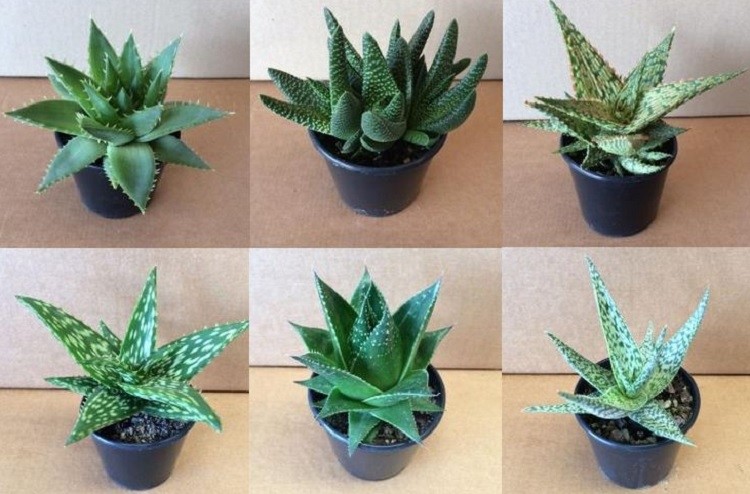
The world of succulents brims with enchanting varieties, yet among them, few possess the dual allure of aesthetic vivacity and culinary utility quite like the Aloe genus. Often regarded as nature’s elixir, these green wonders extend their not-so-secretive allure to our plates. However, one must tread carefully within this verdant oasis, discerning which varieties of Aloe are edible and which are merely delightful to behold. In this exploration, we will navigate the myriad of Aloe plants, unearthing those that offer a delectable experience while ensuring safety for consumption.
To begin our journey, it is essential to understand the distinctive characteristics that define the Aloe genus. This succulent family, recognized for its fleshy leaves and soothing properties, encompasses over 500 different species. Many of these are celebrated for their medicinal attributes, but only a select few are deemed safe for culinary use. The tantalizing question remains: which of these succulents can grace our tables, transforming our meals into a celebration of flavor and health?
Aloe Vera: The Quintessential Comestible
Perhaps the most familiar of all Aloe species, Aloe vera serves as the poster child for edible succulents. With a storied history that threads through ancient civilizations, Aloe vera has been used for thousands of years as both a healing agent and a nutritional supplement. Rich in vitamins, minerals, amino acids, and antioxidants, this succulent emerges as a gastronomical gem.
The leaves, though prickly on the outside, harbor a succulent gel within that can be harvested for consumption. This gel can be blended into smoothies, added to salads, or even incorporated into desserts, crafting an unexpected textural delight. A word of caution, however: the yellow latex found just beneath the leaf skin is a laxative and should be avoided to ensure safety while indulging in this succulent. Selecting fully mature plants—those at least a few years old—ensures both potency and palatability. When prepared correctly, Aloe vera not only entices the senses but also nourishes the body, making it the crown jewel of edible Aloes.
Aloe Ferox: The Bitter Yet Bountiful
Venturing deeper into the realm of edible Aloes, one encounters Aloe ferox, often synonymous with formidable flavor and robust health benefits. Indigenous to South Africa, this species is celebrated not only for its striking appearance but also for its plethora of uses. The sap, much like its cousin Aloe vera, is harvested for consumption; however, it is important to note its bitter taste, which evokes a nostalgic reminiscence of nature’s untamed wilderness.
The bitterness of Aloe ferox is transformative in culinary applications; when sweetened or infused into herbal teas, it can provide a unique flavor profile that dances on the palate. Additionally, the leaves yield a wealth of gel similar to that of Aloe vera, adding a nutritional boost to various dishes. Though somewhat less commonly known, Aloe ferox’s intriguing bitterness renders it an appealing choice for the adventurous cook, not merely as a food, but as an experience that beckons one’s taste buds to explore.
Aloe Aborescens: A Culinary Exploration
Another enchanting member of the Aloe family is Aloe aborescens, often referred to as the tree aloe. Resembling a miniature tree with its thick, serrated leaves, this species bears a rich nutritional profile akin to that of Aloe vera. The gel harvested from its leaves can be enjoyed fresh, incorporated into smoothies, or used to enhance the nutritional content of various dishes.
Beyond the gel, some enterprising cooks have even experimented with the flowers. The vibrant blooms of Aloe aborescens are not only visually stunning but also edible. They can be candied or used as a garnish in salads, infusing culinary creations with both color and sophistication. This versatility underscores Aloe aborescens as not just a plant to admire, but one that offers a wealth of flavors and options for gastronomic experimentation.
Cautionary Notes on Consumption
While the allure of edible Aloes is undeniably compelling, caution must reign supreme. Many Aloe varieties are not safe for consumption, and indeed, some possess toxic qualities that can lead to adverse reactions. The distinction between edible and non-edible species is vast. It is paramount to conduct thorough research and ideally consult a knowledgeable herbalist when exploring beyond the realms of well-known varieties.
The Allure of The Aloe Nomad
Furthermore, the appeal of integrating Aloe into the culinary realm extends beyond individual health benefits. It resonates with the larger ethos of sustainable living and conscious consumption. The cultivation of edible Aloes can be a testament to biodiversity, nurturing an appreciation for the interwoven relationships between food, environment, and culture. Aloe plants not only beautify our spaces but also enrich our diet, encouraging us to adopt a holistic approach to nourishment.
Conclusion: Cultivating a Palate for the Unique
In conclusion, the exploration of edible Aloe plants unveils a treasure trove of possibilities, merging nature’s beauty with culinary delight. The Aloe vera stands tall as the ambassador of edibility, while Aloe ferox and Aloe aborescens invite the adventurous palate to delve deeper into earthy bitterness and floral elegance. As these succulents grace our plates, they also infuse our lives with a captivating story, reminding us that the world of plants offers a plethora of choices—some purely aesthetic, while others tantalize the taste buds. Embrace the allure of edible Aloes, and let their unique qualities inspire your culinary endeavors, transforming the mundane into the extraordinary.
